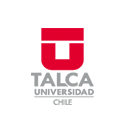
3 results
Search Results
Now showing 1 - 3 of 3
Item Increases in the Amounts of Agricultural Surfaces and Their Impact on the Sustainability of Groundwater Resources in North-Central ChileAutores: Pizarro, Roberto; Borcoski, Francisca; Ingram, Ben; Bustamante Ortega, Ramóin; Sangüesa, Claudia; Ibáñez, Alfredo; Toledo, Cristóbal; Vidal, Cristián; García Chevesich, Pablo A.Water is a fundamental resource for Chile's productive structure, which is more important in arid areas, and especially with agricultural uses. This study was based on two basins (Cogot & iacute; and Illapel) located in the Coquimbo Region of north-central Chile. In this region, surface water rights were closed in 2002 and the only current option is the use of groundwater. These basins have high water demands due to the use of surface and groundwater for agricultural purposes, a fact that should influence the sustainability of groundwater reserves over time. The objective of this study was to determine how much agricultural use has affected the availability of groundwater in two basins. Under the previous context, the evolution of agricultural irrigation surfaces was evaluated using Landsat images and forest classifications. Similarly, groundwater reserves were evaluated using the recessive curves of hydrographs associated with the beginning of each hydrological year. The results show an increase in the agricultural area between 1996 and 2016, with a subsequent decrease, while groundwater reserves denoted significant decreases over time. In conclusion, a significant decrease in the volumes of groundwater reserves in both basins was observed, a decrease that is consistent with the increase in irrigated areas.Item Open-Source Design of Infiltration Trenches for Sustainable Soil and Water Conservation in Rural Areas of Central ChileAutores: Pizarro, Roberto; Vidal Silva, Cristián Lorenzo; Jaque, Dayana; Córdova, Alfredo Ibáñez; Sangüesa, Claudia; Toledo, Cristóbal; García Chevesich, Pablo A.Specific algorithms are developed to solve the equations that define the physical dimensions under various conditions. In this sense, the storm index method was incorporated for the variable precipitation intensity, expanding the number of rainfall stations with the intensity duration frequency (IDF) curves from 9 to 31 within the considered territory (the Biobio Region of Central Chile). Likewise, the infiltration values and runoff coefficients necessary for calculating the dimensions of the trenches were obtained using the Python programming language. The results show that an open-source Python solution allows high reliability and efficiency based on the tests developed. For this reason, this prototype is expected to add new mathematical expressions that may arise to better account for an efficient design of soil and water conservation works or infiltration trenches. In this way, it is concluded that it is possible to develop simulation models for the efficient design of trenches based on well-defined and limited theoretical modeling, adding to computer language tools. This allows for a virtuous synergy that can help address efficient public policies to conserve soil and water in Chile and elsewhere.Item Spatio-Temporal Behavior of Land Surface Temperatures (LSTs) in Central Chile, Using Terra MODIS ImagesAutores: Muñoz Aguayo, Pedro; Morales Salinas, Luis; Pizarro, Roberto; Ibáñez, Alfredo; Sangüesa, Claudia; Fuentes Jaque, Guillermo; Toledo, Cristóbal; García Chevesich, Pablo A.Land surface temperature (LST) is one of the most important variables in the physical processes of surface energy and water balance. The temporal behavior of LST was analyzed between the latitudes 32 degrees 00 ' S and 34 degrees 24 ' S (Valparaíso and Metropolitana regions of Chile) for three summer months (December, January, and February) in the 2000-2017 period, using the Terra MODIS image information and applying the Mann-Kendall test. The results show an increase in LST in the study area, particularly in the Andes mountain range in January (5240 km2), which mainly comprises areas devoid of vegetation and eternal snow and glaciers, and are zones that act as water reserves for the capital city of Santiago. Similarly, vegetated areas such as forests, grasslands, and shrublands also show increasing trends in LST but over smaller surfaces. Because this study is regional, it is recommended to improve the spatial and temporal resolutions of the images to obtain conclusions on more local scales.

